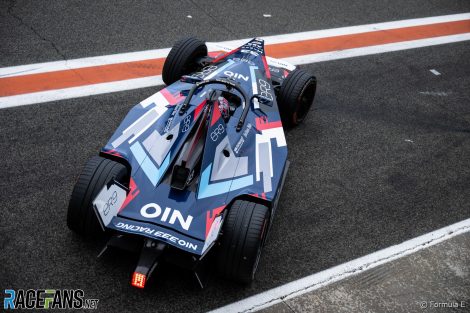Formula E’s ninth season sees what could be some of the most important changes in the championship’s history.
Not just because of the technological advances that have been made with its new, third-generation cars, but because of the hopes riding on the FIA’s pioneering all-electric series and the uncertainties around it.
Last year’s champions Mercedes cited underwhelming viewing figures as one factor behind their exit from the series. With Techeetah also departing, two names responsible for a combined nine title wins are no longer on the grid.
There has also been off-season controversies about the new ‘Gen3’ car as well as some of the personnel changes across the paddock.
The series has embarked on a total branding revamp to coincide with its latest new era, changing its logo, font and its entire digital presence. This reflects an expectation its Gen3 era will be a distinct change from the series’ past. But will it sustain its reputation for close competition?
The impact of new rules and a new car
FE’s latest machine is being pressed into service just nine months after it was officially revealed. The Gen3 chassis has separate powertrains for the front and rear wheels. The new front powertrain will run at 250kW, with the car’s maximum allowable total power delivery being 350kW.
Each car is limited to two motor generator units, two gearboxes and two inverters over the season for the delivery of power to the rear wheels. The maximum amount of power that can be regenerated by the car has more than doubled from 250kW to 600kW.
FE claims more than 40% of the energy used in a race will now come from regenerative braking, with the deceleration of the rear wheels now entirely down to regen rather than also relying on traditional braking systems. However this is understood to have caused some teething problems in development, and the first race of the season this weekend will reveal how successfully they have been addressed.
The 2023-spec powertrains will contribute to a big jump in car performance, with drivers setting their timed laps at 300kW rather than 220kW during the group stage of qualifying. When they progress to the knock-out duels that determine the top eight places on the grid, the battle for pole will now be fought at 350kW rather than 250kW. The top speed of a Gen3 car is now said to be more than 200mph, although that figure is highly unlikely to be reached on FE’s short circuits.
Click Here to Read the Full Original Article at RaceFans…

